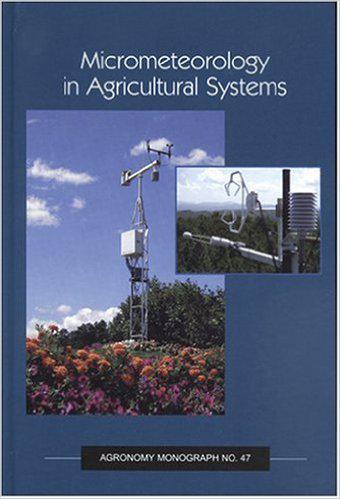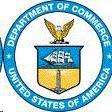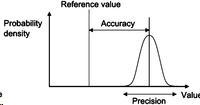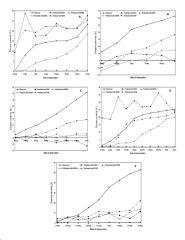Результаты поиска
-
2016-07-03 08:22:53
The survival and success of all living organisms are determined by energy and matter transfers between the upper layers of the soil profile and the lowest levels of its atmosphere. In this monograph 50 experts collaborated to develop 23 chapters detailing the role that micrometeorology plays in crop production systems and terrestrial ecosystems. Agroecosystems Analysis - ISBN 0891181539 Phosphorus: Agriculture and the Environment - ISBN 0891181571 Micrometeorology in Agricultural Systems - ISBN 089118158X
The American Society of Agronomy, Crop Science Society of America, and Soil Science Society of America are prominent international scientific societies headquartered in Madison, Wisconsin. The Societies specialize in peer-reviewed, high-quality science titles for a wide variety of audiences.
Some of the many areas we publish in include:
-Soils Methods and Management
-Crop Development and Improvement
-Agrosystem Management and the Global Food Crisis
-Environmental Conservation and ClimatologyMicromet : -
2016-07-03 08:38:21
The Alliance of Crop, Soil, and Environmental Science Societies (ACSESS) is an association of prominent international scientific societies headquartered in Madison, Wisconsin, USA. ACSESS was created by and is composed of the American Society of Agronomy (ASA, founded in 1907), the Crop Science Society of America (CSSA, founded in 1955), and the Soil Science Society of America (SSSA, founded in 1936). For more information, visit: www.myacsess.org
About the Digital Library
The ACSESS Digital Library is a complete collection of all content published by the American Society of Agronomy, Crop Science Society of America, and Soil Science Society of America. The Digital Library makes it possible to search, browse, research, comment on, and share all of our published literature in one convenient place.
The Digital Library is a vital component in serving our mission and our membership by providing innovative, valuable resources for the betterment of our community, and our world.Micromet : -
2016-07-03 09:06:56
History has shown that many of the technological advances in micrometeorological measurement methods and techniques were facilitated by agronomic research into understanding plant–water relationships and photosynthesis (Deacon & Swinbank, 1958; Lemon, 1960; Suomi & Tanner, 1960; Tanner, 1960). Even today, many research programs are focusing on a better understanding of the water balance on regional and continental scales with a goal of providing useful probabilistic forecasts that will lead to more effective planning of the use of water resources in areas where water is limited or stricken by drought (Lawford, 1999). The need to understand and predict components of the water and carbon cycle on seasonal and annual time scales has pushed the micrometeorological technology to work not only for short duration intensive experiments, but for much longer periods (Baldocchi et al., 2001; Running et al., 1999; Grelle & Lindroth, 1996).
Micromet : -
2016-07-03 09:08:50
Within the past decade or so, the accuracy of evapotranspiration (ET) estimates has improved due to new and increasingly sophisticated methods. Yet despite a plethora of choices concerning methods, estimation of wetland ET remains insufficiently characterized due to the complexity of surface characteristics and the diversity of wetland types. In this review, we present models and micrometeorological methods that have been used to estimate wetland ET and discuss their suitability for particular wetland types. Hydrological, soil monitoring and lysimetric methods to determine ET are not discussed
Micromet : -
2016-07-03 09:13:13
The use of sensors can provide quantitative information to help guide and automate the decision-making process for irrigation. This article provides an overview of the most common sensors that can be used for this purpose. Such sensors include those that are commonly used for weather stations as well as sensors to monitor the water status of the soil or substrate, and sensors that can be used to monitor and troubleshoot irrigation systems. Although collecting data with sensors is relatively easy, data are only useful if the sensors are used correctly and the limitations of sensors are understood. Optimizing the value of the collected data requires selecting the best sensor(s) for a particular purpose, determining the optimal number of sensors to be deployed, and assuring that collected data are as accurate and precise as possible. We describe general sensing principles and how these principles can be applied to a variety of sensors. Based on our experience, proper use of sensors can result in large increases in irrigation efficiency and improve the profitability of ornamental production in greenhouses and nurseries.
Micromet : -
2016-07-03 09:28:55
The "Eddy Covariance Method for Scientific, Industrial, Agricultural, and Regulatory Applications: A Field Book on Measuring Ecosystem Gas Exchange and Areal Emission Rates" book is intended to familiarize the reader with the general theoretical principles, requirements, applications, and planning and processing steps of the eddy covariance method. This book will assist readers in furthering their understanding of the method, and provides references such as micrometeorology textbooks, networking guidelines and journal papers. In particular, it is designed to help scientific, industrial, agricultural, and regulatory research projects and monitoring programs with field deployment of the eddy covariance method in applications beyond micrometeorology.
Micromet : -
2016-07-03 09:53:51
Diverse modeling approaches viz. neural networks and multiple regression have been followed to date for disease prediction in plant populations. However, due to their inability to predict value of unknown data points and longer training times, there is need for exploiting new prediction softwares for better understanding of plant-pathogen-environment relationships. Further, there is no online tool available which can help the plant researchers or farmers in timely application of control measures. This paper introduces a new prediction approach based on support vector machines for developing weather-based prediction models of plant diseases.
Micromet : -
2016-07-03 10:27:22
The standardization of meteorological observations and the uniform publication of observations and statistics are among the functions of the World Meteorological Organization, as stated in the WMO Convention. In accordance with these objectives, the World Meteorological Congress has adopted from time to time Technical Regulations that specify meteorological practices and procedures to be followed by the Member countries of the Organization. These Technical Regulations are supplemented by a number of Guides, which describe in more detail the practices, procedures and specifications that Members are invited to follow and implement in establishing and conducting their arrangements for compliance with the Technical Regulations and in otherwise developing meteorological services in their respective countries.
Micromet : -
2016-07-21 04:52:30
Соответствующим образом подготовленный персонал является решающим фактором успешной деятельности любой организации. В этой связи образование и подготовка кадров играют важнейшее значение, и Всемирная Метеорологическая Организация (ВМО) придерживается этой фундаментальной точки зрения.В самом деле,одной из цел- ей ВМО, как это отражено в ее Конвенции, является поощрение работы по подготовке кадров в области метеорологии и других смежных областях, а также содействие коор- динации международных аспектов данного направления. На протяжении всей своей деятельности,начиная с момента своего образования в 1950 году,ВМО вносит огромный вклад в развитие системы образования и подготовки кадров.
Micromet : -
2017-01-24 00:46:080. Введение к презентации 1.Сельское хозяйство в 21-ом веке. 2. Еще раз о IoT. Лидеры рынка о возможностях IoT в сельском хозяйстве. 3. ГородскоеMicromet :







